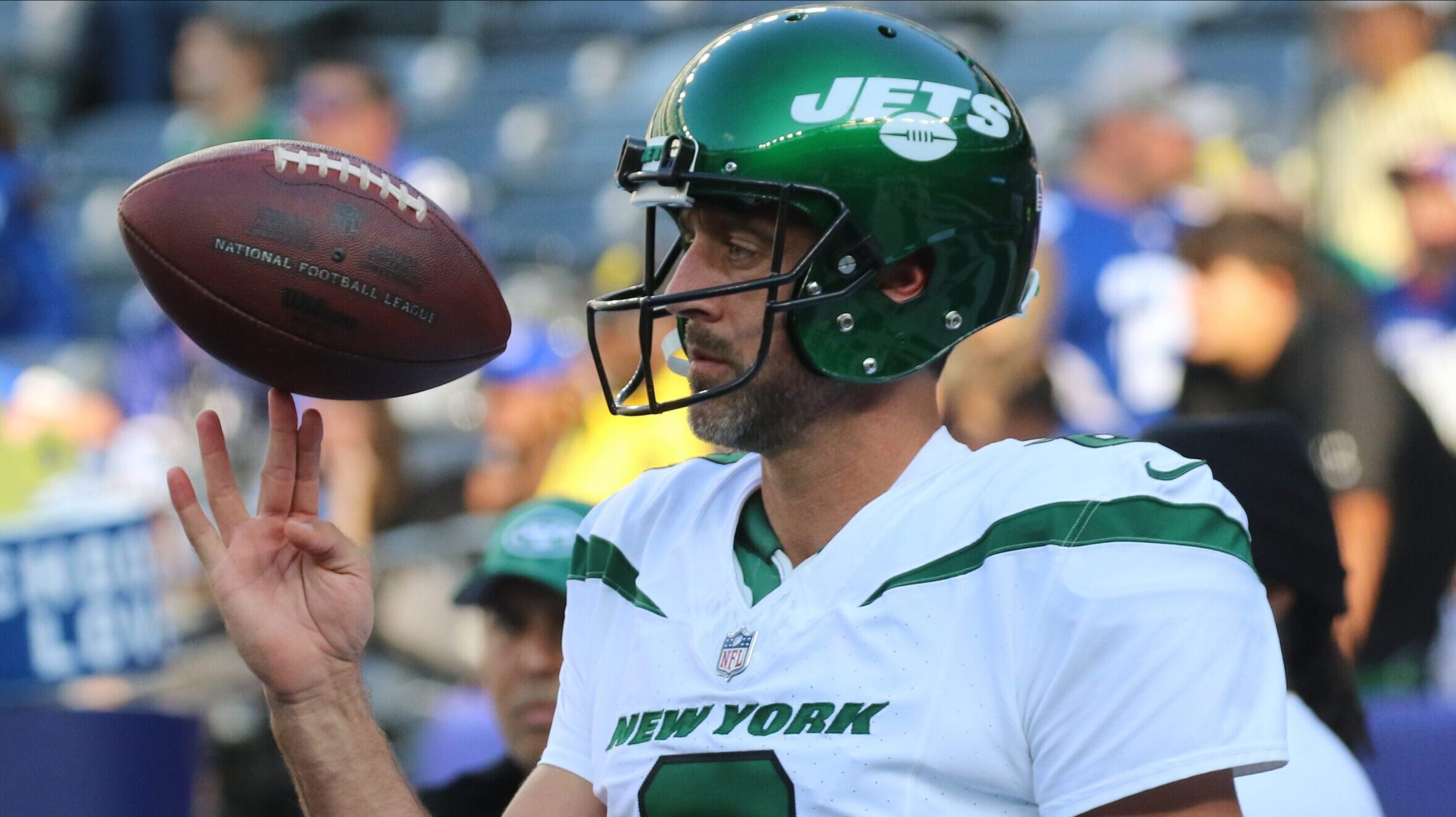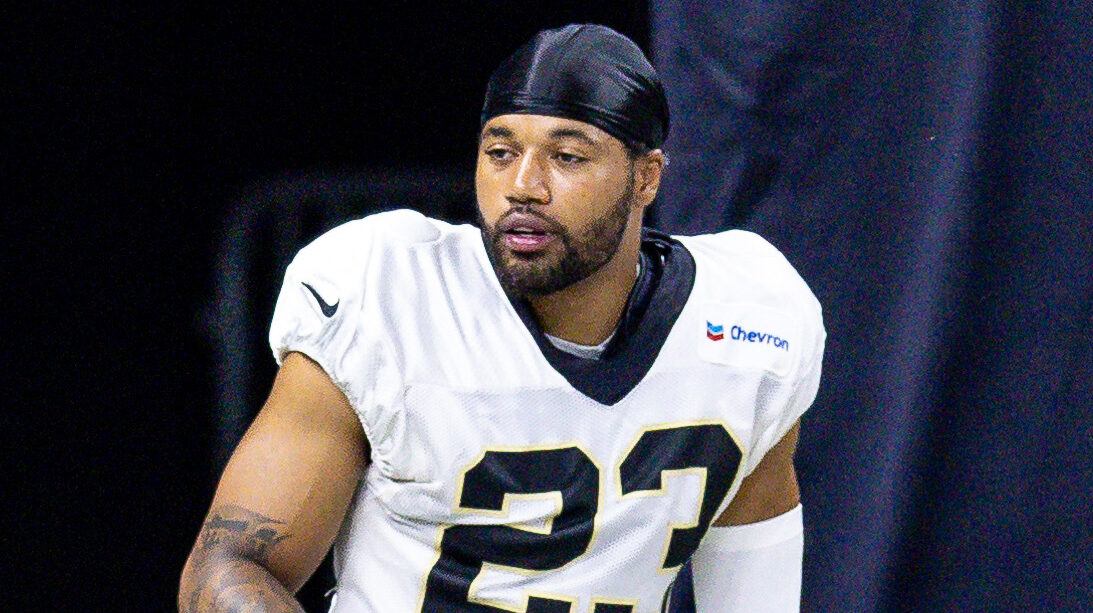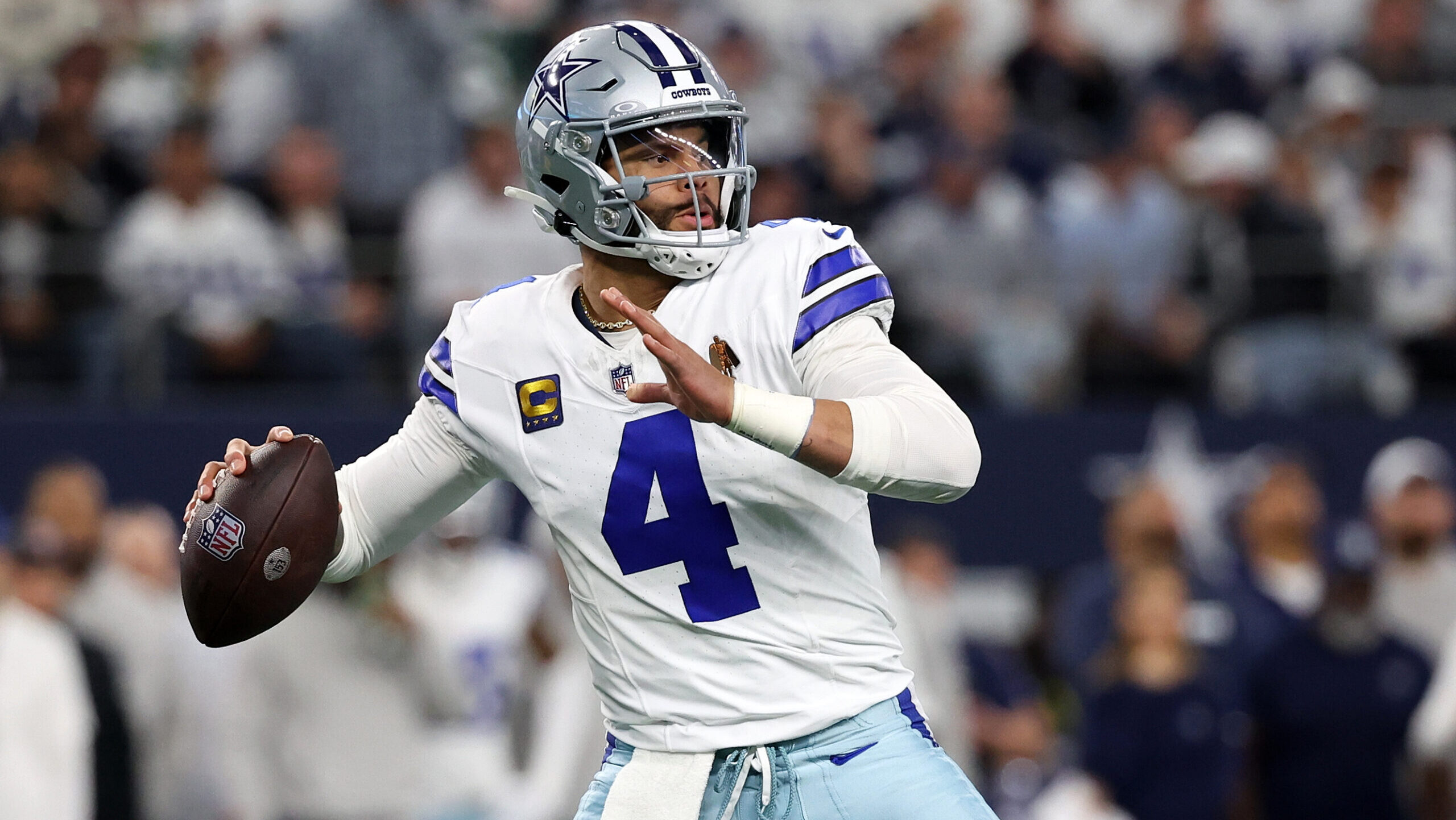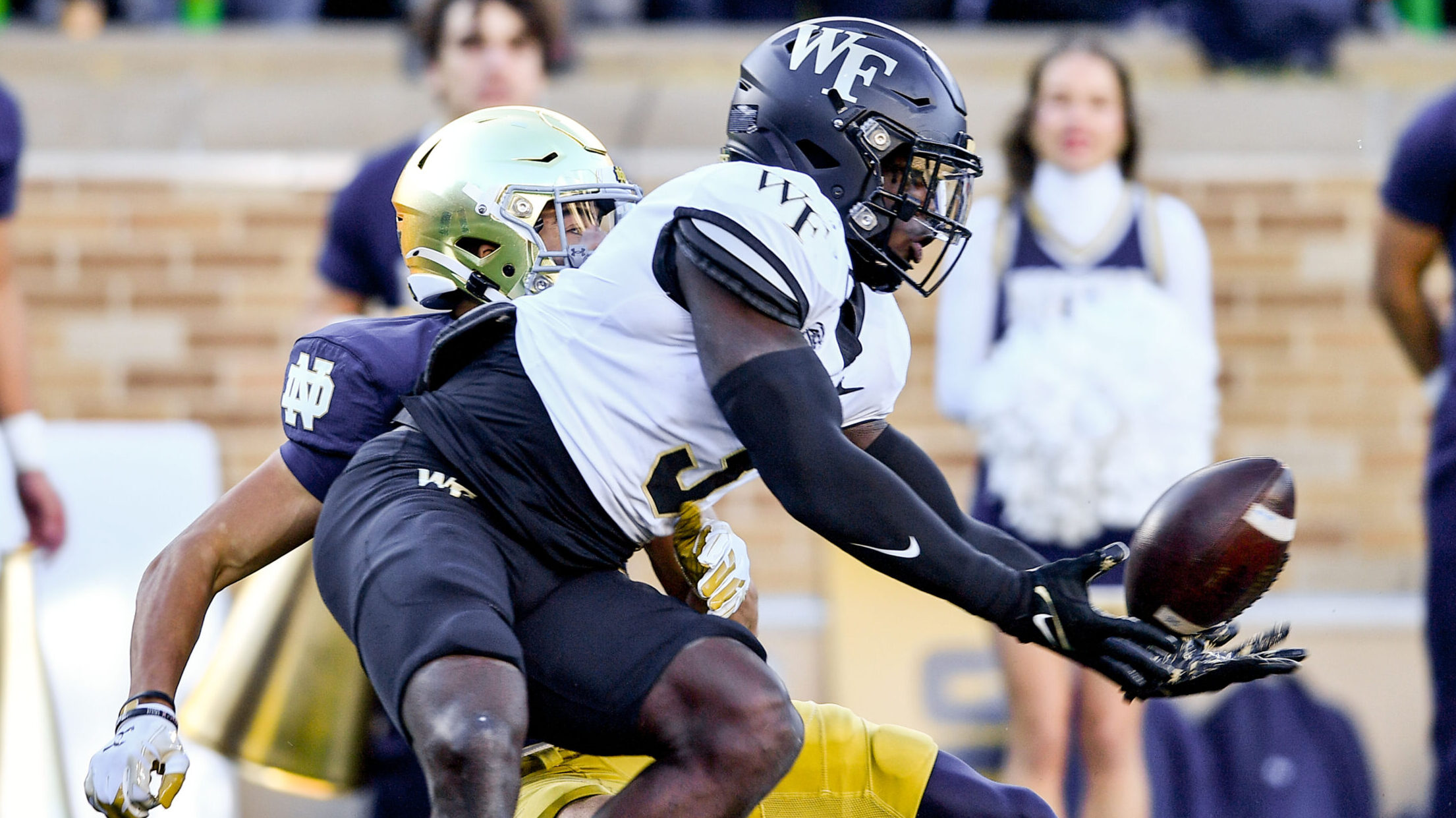NFL Analysis
4/10/24
7 min read
J.J. McCarthy Isn't a Top-Five-Quality Player, But He Will Be a Top-Five Pick
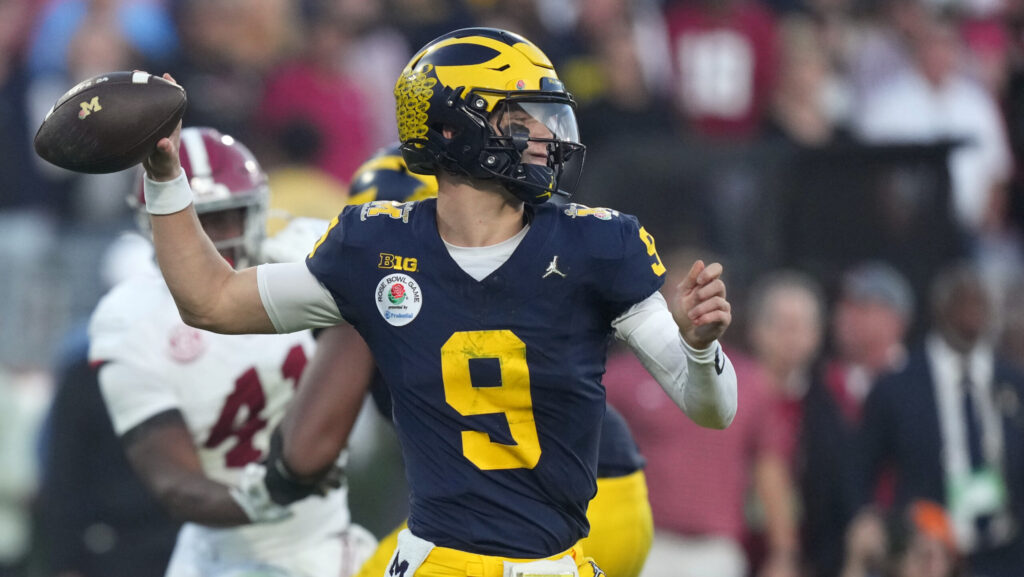
Everything asked about J.J. McCarthy’s evaluation feels loaded, as his play and NFL projection feel impossible to extricate from some larger context.
As is true of every two to three drafts, there’s a first-round quarterback who becomes a mascot for discourse — the litmus test of where the league is, what makes for winning quarterback play and what you can actually project out at this position.
McCarthy is at the center of this year’s debate.
For some, it's hard to parse whether he's the worst of 2024's top-tier quarterbacks or the best of the next, while others are steadfast in their belief that he’s on equal or better footing than Drake Maye and Jayden Daniels.
In my most recent mock draft, McCarthy went third overall, but where a player is drafted is not always indicative of how he’s graded, especially at this position. With the 2024 NFL Draft right around the corner, it’s time to put my waffling to rest and take a definitive stance on McCarthy as a prospect and look at whether his tape suggests he’s legitimately a top-five talent.
McCarthy’s passing profile is reminiscent of eras long left in the past when it comes to quarterback scouting — against top competition the last two years, you’d be lucky to cobble together more than a dozen throws that directly translate to the next level.
The lack of pure volume makes him a tricky evaluation. The system he played in manufactured and restricted so much of the quarterback’s decision-making process that you’re left to evaluate McCarthy’s tools more so than you would the other consensus first-round guys in this class.
McCarthy Film Review
The first (and arguably most important) on-field quality I’m looking for in quarterbacks is footwork. I want to get a picture of how a passer gets to his platforms, how varied said throwing platforms can be and whether his accuracy and decision-making remain consistent when under duress.
McCarthy is a net neutral in this category, but I’d grade him as above average in his footwork when he leaves the pocket. His accuracy survives when he’s out of the pocket. Despite not throwing left often, the clip below shows that he trusts his feet and hips enough to deliver the football when he’s rolling to his off hand.
When it’s time to hang in the pocket and deliver, McCarthy is willing to take on contact to make the right throw. That will significantly affect whether he succeeds in an NFL context as a passer with a slight build.
In the clip below, he’s throwing a shallow cross, so the degree of difficulty is lower than trying to drive an intermediate or deep pass while he’s being cut in half. Still, McCarthy’s trust in his eyes is evident, as they never drop when the pocket is compromised.
We will get to his arm talent, but this clip is something I have flagged as a potential issue in his game. When he’s taking hits in the pocket, there isn’t enough tape of McCarthy pushing the ball downfield when pockets are muddy. Part of that is the offense’s design, but that’s an attribute you can’t assume will show up quickly in the NFL — or that it's something that will develop with time.
To that point, McCarthy’s issues in the pocket are laid bare when he’s forced to step up. He’s a bit of an over-strider when trying to push the ball downfield, so he has a hard time when the throwing window isn’t clear and/or when he lacks space around his front foot.
In the clip below, you can see Washington’s coverage disrupting his timing. He doesn’t feel comfortable enough in a tight pocket to make minor movements to gain access to his checkdowns or secondary options. You’ll see McCarthy leave out of the back door of the pocket at times, and quarterbacks rarely succeed in the NFL by escaping backward — see Zach Wilson as a recent example.
Footwork is tied to throwing mechanics — specifically, how much arm talent you can access/maximize on a play-to-play basis.
As with most passers, mechanics issues are most prevalent when they’re late in their progression or out of rhythm, and the same is true of McCarthy. The miss in the clip below was predictable as soon as he hitches in his dropback.
The big strides waste his transfer of energy from back foot to front foot, putting more pressure on his arm to generate the velocity — and the more strain you put on your arm, the more likely the ball is to spray inaccurately. In some ways, McCarthy reminds me of pitchers in the modern MLB: throwing with a hyperfocus on velocity, possibly to the detriment of other parts of his game.
McCarthy seems to be looking to put as much spin and heat on each throw as he possibly can, reminiscent of healthy/prime Ryan Tannehill. A natural cost in that endeavor is the various arm angles and touch passes that can get a quarterback out of trouble when pockets break down and plays get outside their intended structure.
This isn’t to say McCarthy can’t throw a beautiful ball, though. The throw below is one of my favorites from 2023 and exemplifies what he can be when operating on time and in rhythm. Even though his body positioning isn’t ideal, you see the difference in throw quality when his stride length and delivery stay compact and comfortable.
This overroute is thrown with excellent trajectory and timing, and these are the kinds of plays McCarthy’s biggest supporters will use as evidence of his potential — with good reason.
Lastly, the part of his game I’m most in the air about is his anticipation and eye discipline. Again, it’s tough to disentangle how much of McCarthy’s play style was true to him and how much was a product of Michigan’s offensive structure, but if we can credit him for clips like the one above, we can critique him for the one below.
On this play, the progression is tied to the boundary safety — if he takes the middle of the field, you throw the over route (first in-breaker) to the tight end; if he sits on the hash (quarters) or opens out toward the boundary (halves), you throw the bang-8 (second in-breaker).
This throw is technically correct, on time and completed and gains a first down, so there’s undoubtedly some nitpicking we’re engaging in. Still, you want to see McCarthy — who’s willing to push the ball downfield when things are clean and within structure — create some offense via eye manipulation.
If he were to show some flashes of holding a safety on the hash with his eyes and ripping the ball into the next void, I’d be willing to bypass some of the things I don’t love about his pocket navigation. Similarly, if he were a dynamic enough athlete to escape pockets and punish defenses out in space, combining that with his tools would be intriguing.
If we saw a plethora of arm angles, touch throws and accuracy deep and/or outside the numbers, I’d be confident he could solve some of his issues with creativity.
Those would be the qualities of a potentially transformative quarterback. By my estimation, McCarthy is the third-best passer in this class, but he’s not a franchise-changing talent walking in the door.
At his best, he’s something among Kirk Cousins, Tannehill, Brock Purdy and Baker Mayfield. These are fine starting quarterbacks at their peaks, but they're not the comparisons you’d look for in a first-round signal-caller.
It just won’t matter in the slightest when a quarterback-desperate team is on the clock.
>> READ: Greg Cosell's Scouting Report on McCarthy


